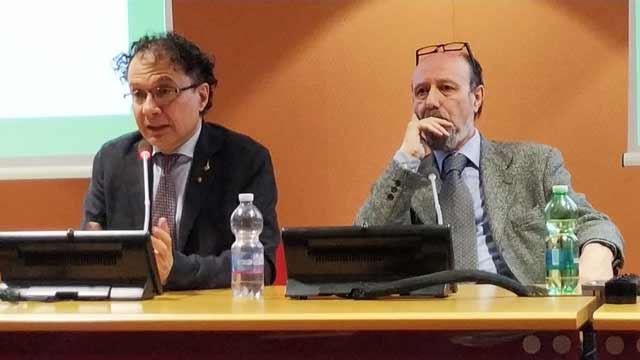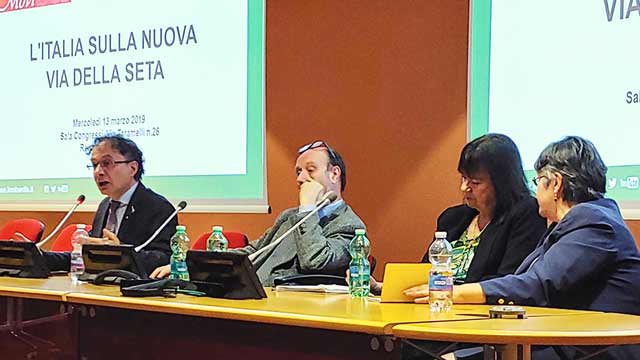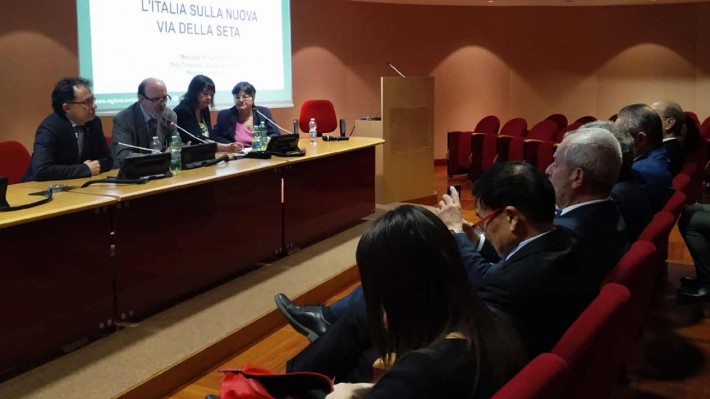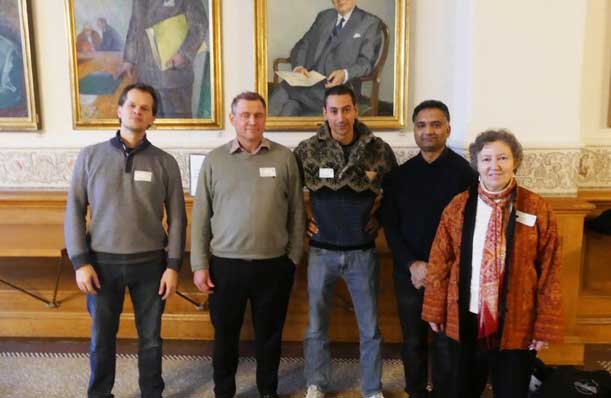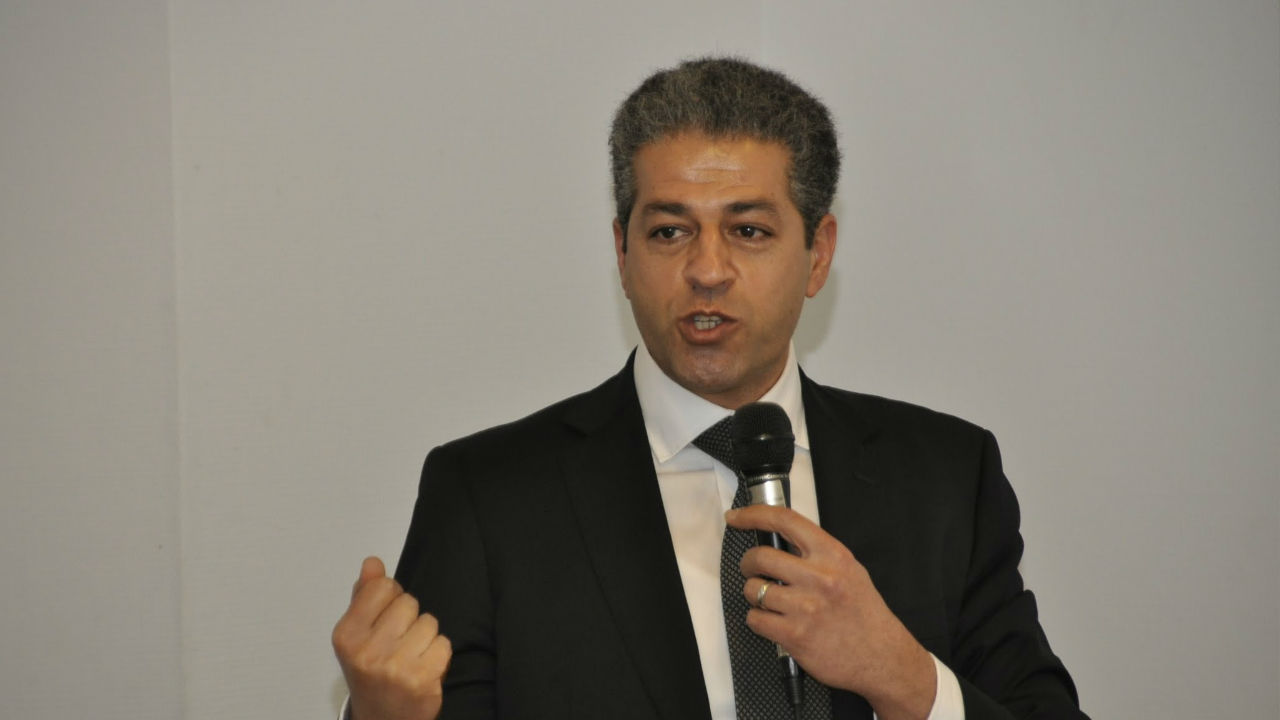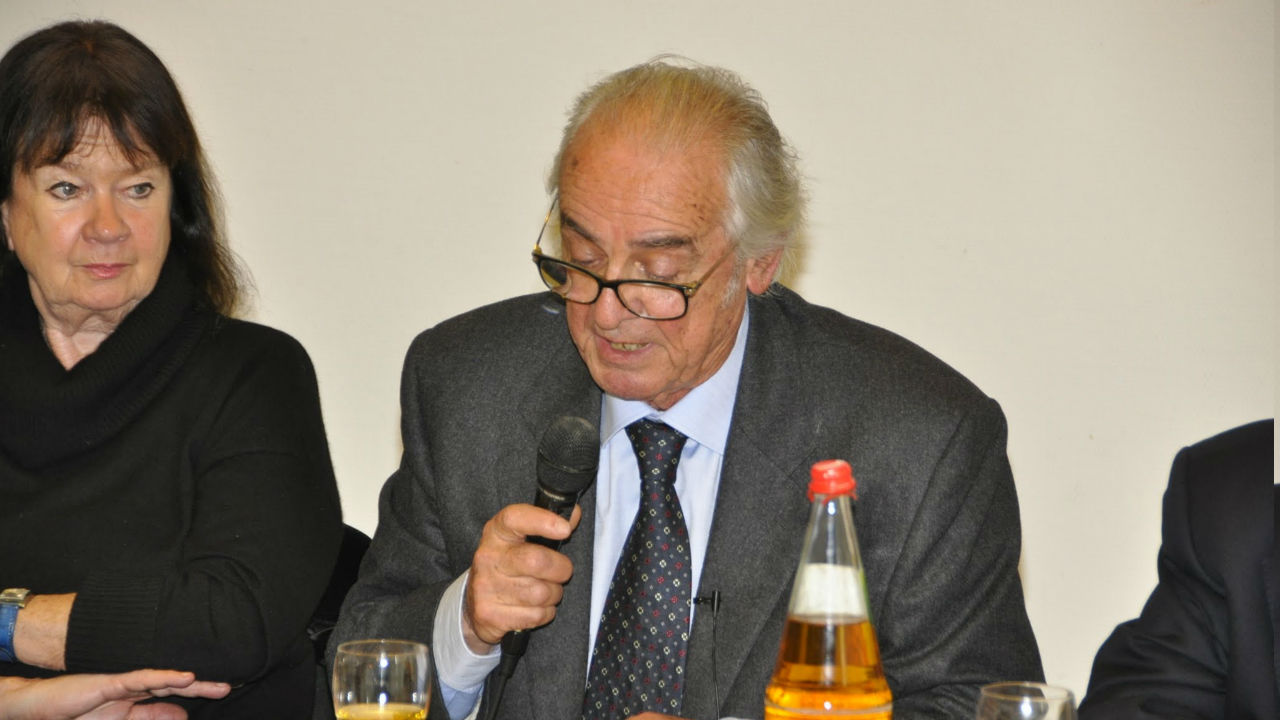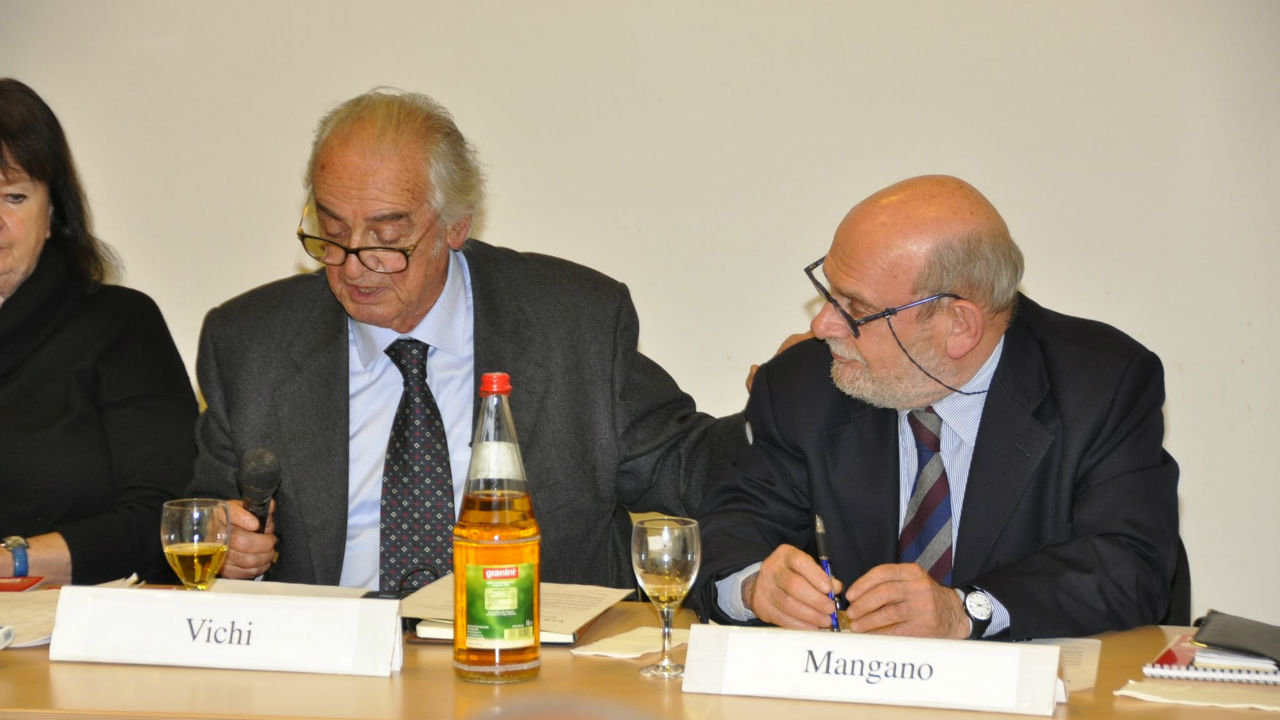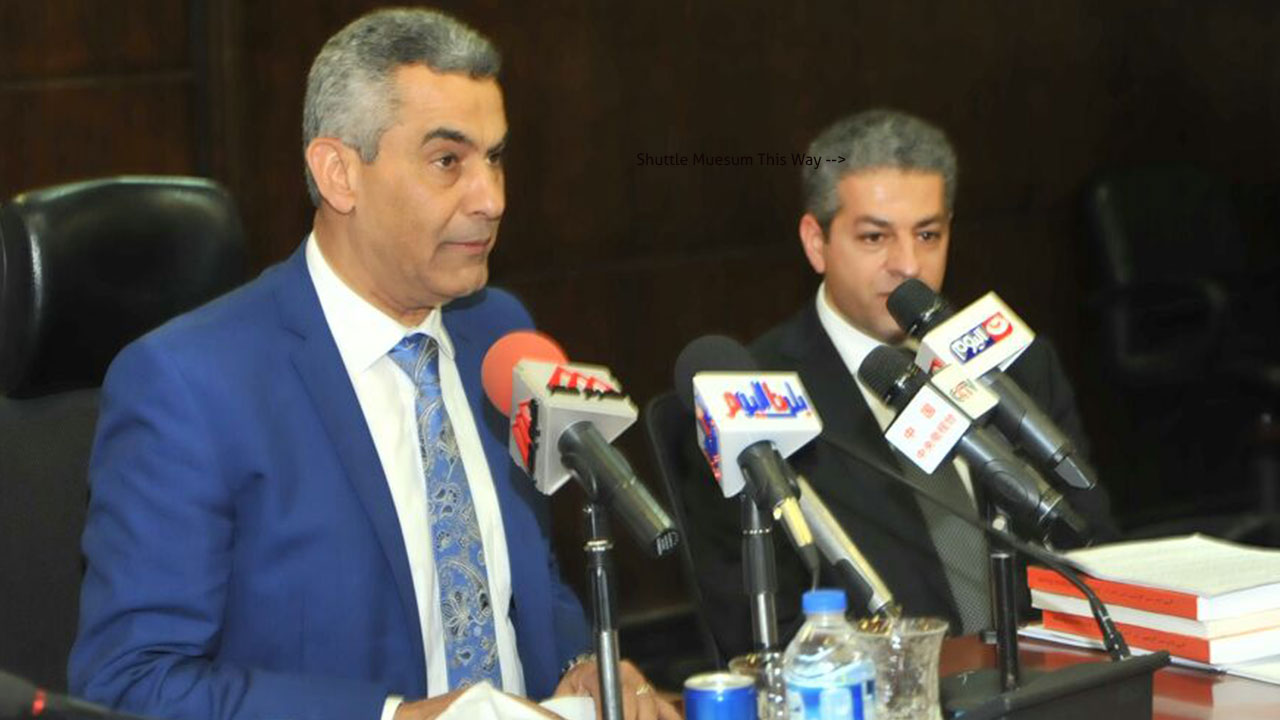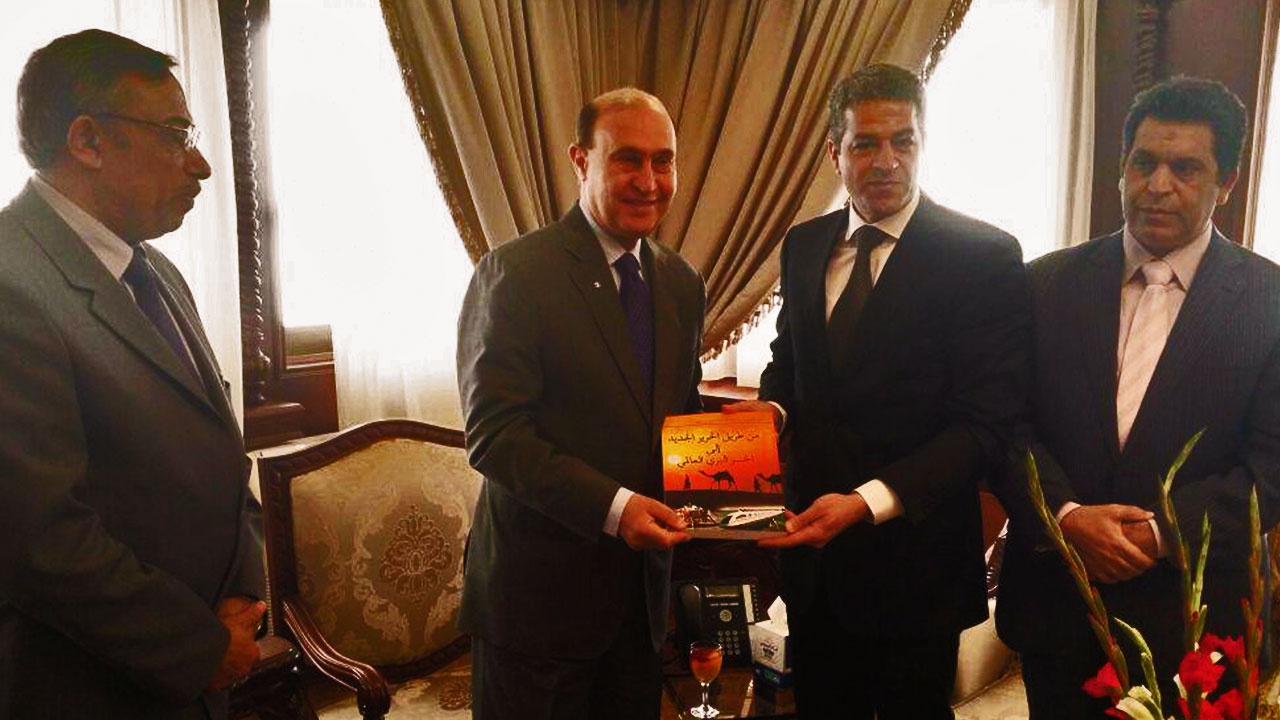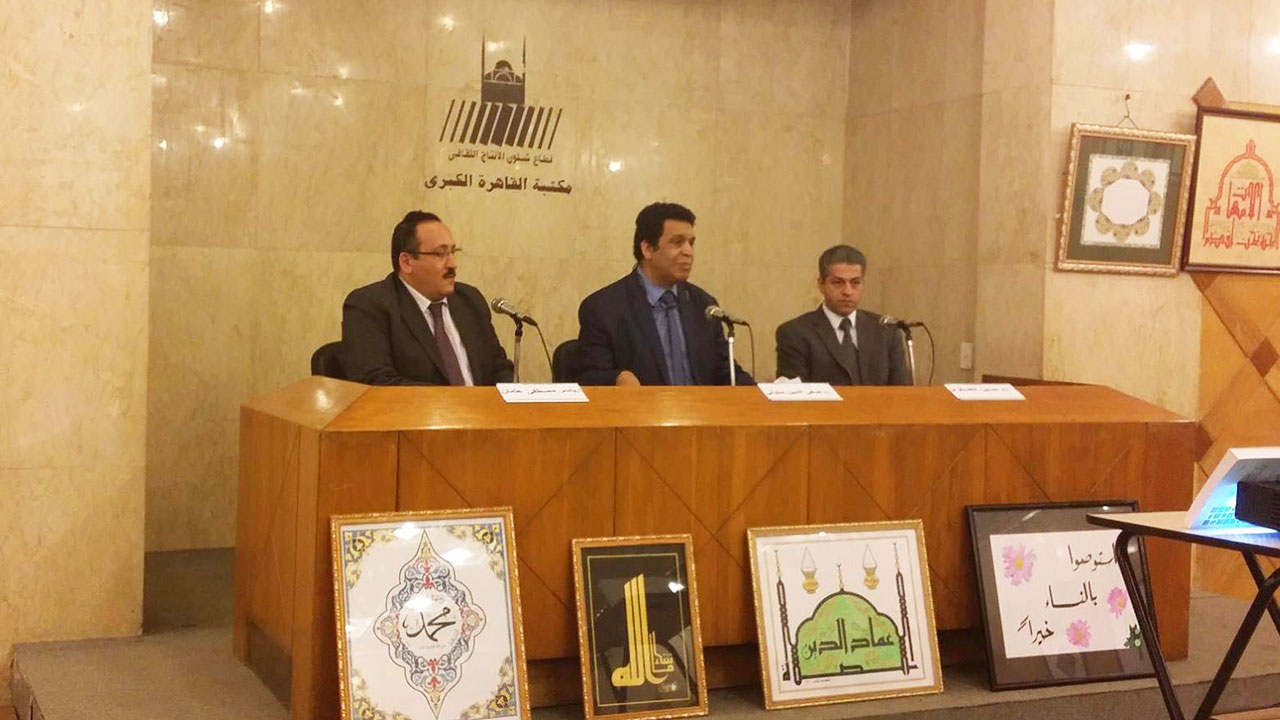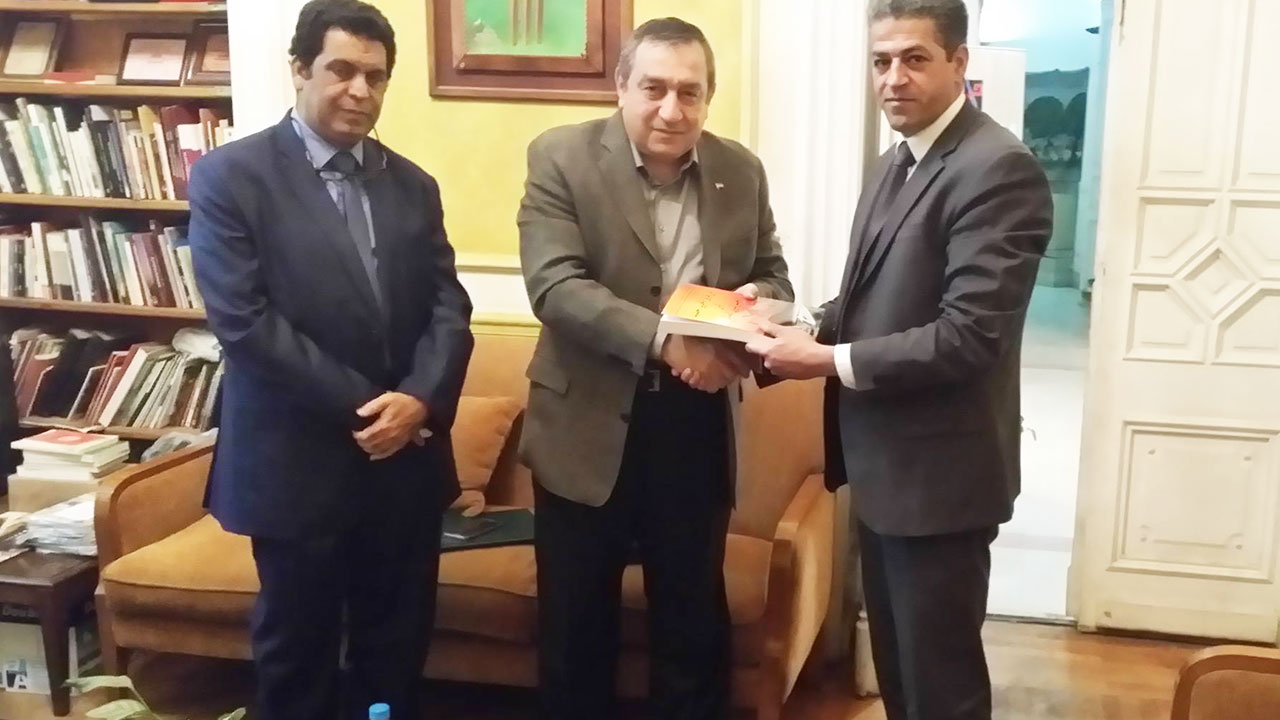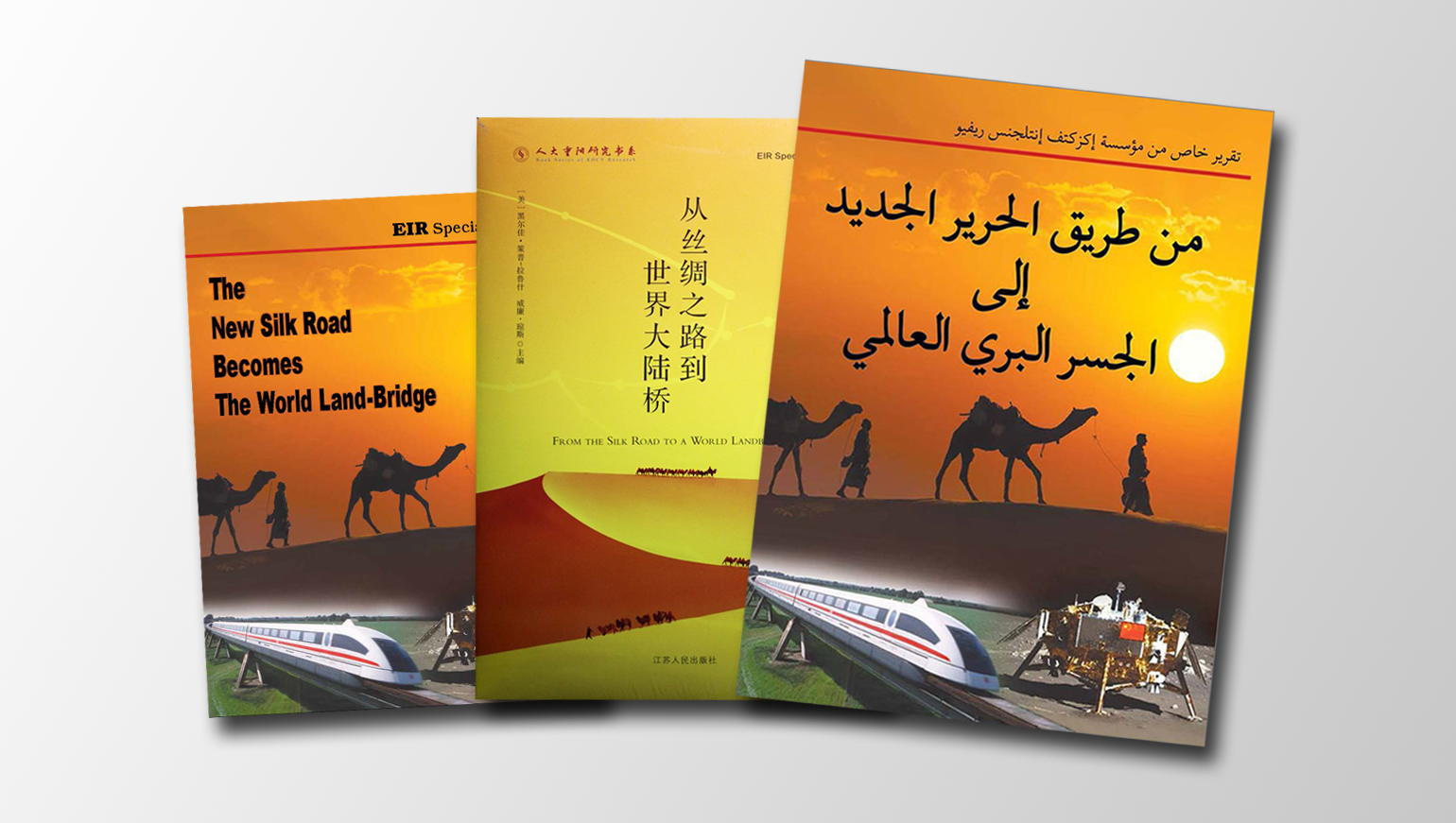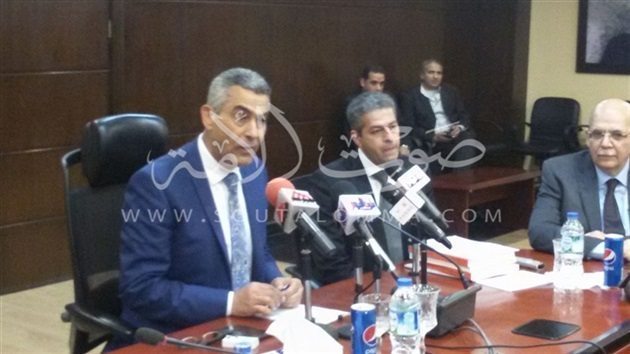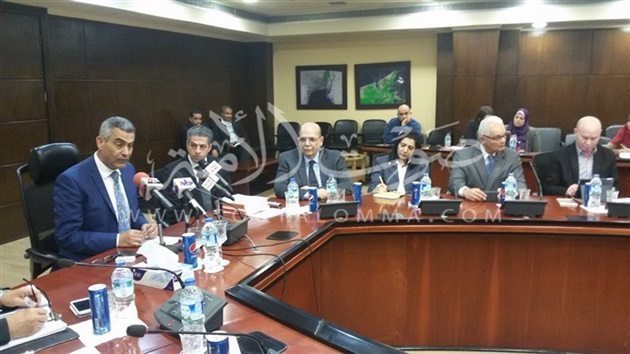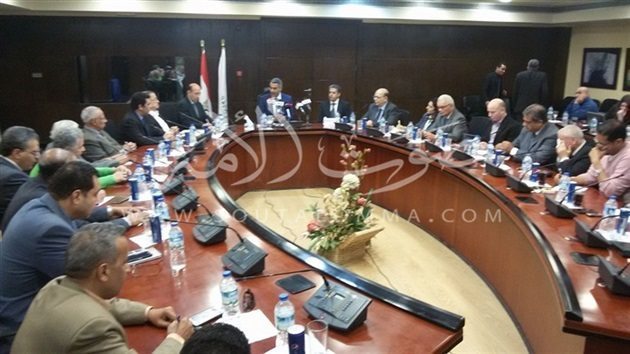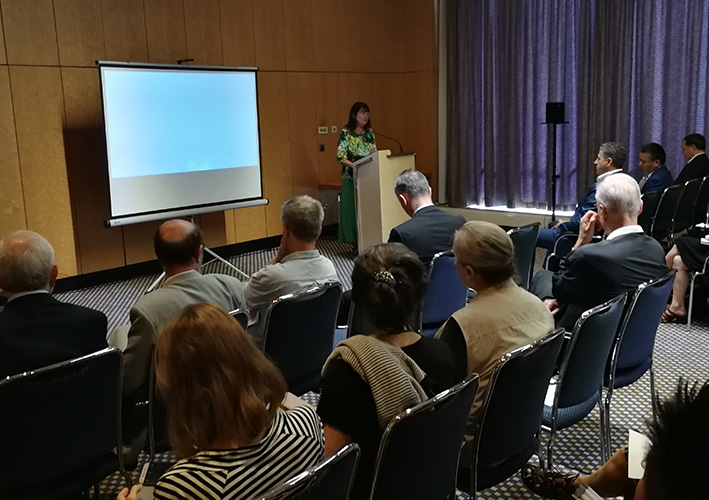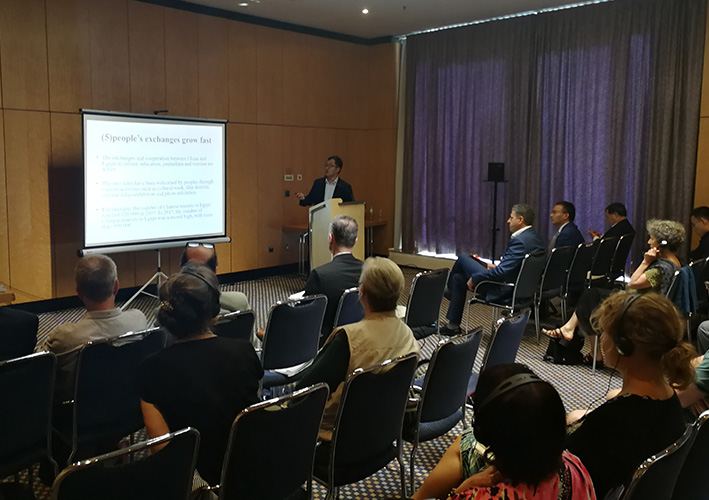The Belt and Road and Apollo Program: Sources of Inspiration
By Hussein Askary and Jason Ross
In just a few days, world leaders will gather in New York for the 74th U.N. General Assembly summit, whose theme this year is “Sustainable Development.” The gathering is expected to attract developing nations’ leaders who are eager to see the implementation of the prioritized UN Sustainable Development Goals (SDG2030). The priority goals are the eradication of poverty (Goal 1), eradication of hunger (Goal 2), providing good healthcare (3), quality education (4), clean water (6), available and affordable energy (7), economic growth (8), and infrastructure and industrialization (9). Despite the very real urgency of achieving these goals, the US, the EU, and the UN bureaucracy itself will likely place the greatest emphasis on Goal 13 (Climate Action)!
Wealthy doomsday prophets from Western countries will be descending on the UN building in New York, flying in planes, sailing on yachts, or crawling on the ground to preach the prophecy of the “end of the world” through the collapse of Earth’s climate—caused, they say, by continued economic growth and industrial development. They are joining a growing group of powerful financial and banking interests in the Western world who intend to enrich themselves through what they call “green growth” and “green finance.” The intention is to stop real economic growth and technological and scientific progress on a global scale to “save the planet.” In the meantime, the aspirations of poor countries and developing nations will have to take a back seat, because, obviously, there are more urgent matters than eliminating poverty and hunger, providing healthcare, education, and clean water and electricity to billions of people.
During the colonial period, the people of colonized nations were told that they were inferior beings, for whom poverty was the natural condition. In the post-colonial period, they were told that their poverty was the natural result of having corrupt leaders. Today, developing nations are told they are poor because the greedy, greedy industrial world caused climate change, and that they should never ever attempt to emulate the industrial world. Instead, they will get “climate-change mitigation” aid and handouts. Following this outlook would make poverty permanent (sustained) for generations.
The continued drumbeat for ending economic development is not new, but it has reached a hysterical level threatening both industrialized and developing nations. The vague discussion of “sustainable development” is partly to blame. The authors of this article are inclined to believe that there is a fundamental contradiction and discrepancy between how this term is propagated in the West and how it is perceived in China and other developing nations. In China and other developing countries, it is read “sustainable development” (with emphasis on “development”), while in the West, the emphasis lies on “sustainable.”
The Main Premise: Limited Resources!
The term “sustainable development” was formally codified by the United Nations through the 1987 Brundtland Report. (footnote 1) It is usually associated with promoting the use of so-called “renewable” sources of energy, such as solar and wind power, and is generally concerned with alleged adverse impacts of human activity on the environment. The referenced report states that “sustainable development” is defined as sufficient development to cover the “basic needs” of poor societies, i.e., the bare minimum to ensure survival, as well as extending to all nations and peoples the opportunity to fulfill their aspirations for better living standards.
However, the report states that many people in modern societies “live beyond the world’s ecological means, for instance in our patterns of energy use,” and warns that “sustainable development requires the promotion of values that encourage consumption standards that are within the bounds of the ecological possible and to which all can reasonably aspire.” How are these bounds determined? The report concedes that “the accumulation of knowledge and the development of technology can enhance the carrying capacity of the resource base. But ultimate limits there are, and sustainability requires that long before these are reached, the world must ensure equitable access to the constrained resource and reorient technological efforts to relieve the presume.” But are there truly ultimate limits for irreplaceable resources? Are the limits fixed by nature, or are they determined by our discoveries and inventions?
The notion of limited natural resources and the so-called “carrying capacity” of the ecological system are not applicable to human society, since it is the level of scientific and technological progress which defines the range of “resources,” rather than an a priori “natural” limit. Therefore, adopting the “sustainable development” goals determined by such notions as are presented in the Brundtland Report poses a great obstacle to eliminating poverty and providing higher living standards and quality of life for all individuals and nations. What is needed is either a new definition of these notions, or the adoption of completely different concepts.
China has proven that the way out of poverty and onto the path of progress is through fast-track “industrialization” and large-scale development projects, including mega-projects, using the full range of resources, whether scientific, human, or natural. For example, all useful sources of energy, such as coal, oil, gas, hydropower, and nuclear power, must be used. While it is imperative that the sources of power with a greater energy-flux density, like nuclear fission and fusion, should replace the less dense sources, it is neither reasonable nor moral to ask poor nations to avoid the sources of power that enabled the United States, Europe, Japan and others to become modern industrial societies. The speed of power expansion required necessitates the use and construction of hydrocarbon power sources, while the needed nuclear industrial base is developed and scientific advances for fusion are made.
China’s economic miracle is based on implementing sound policies that seem to be the opposite of those demanded by such international institutions as the World Bank, the IMF, international environmental organizations, and financial consulting corporations and think tanks. China has followed a policy which was, ironically, the policy that made the US the greatest economic power on earth by the end of the 1940s, and made a ruined Germany the second greatest industrial power in the post-World War II world.
China’s is a dirigist policy of centralized, state-financed development of infrastructure and industry through national credit for long-term development, by using the latest technological and scientific innovations and developing new ones.
This discrepancy—between the proven successful methods of development, both current and historical (as in industrialization of the United States and Germany, for example) on the one hand, and what is now being promoted by international institutions on the other—must be addressed and eliminated. The new paradigm of development spearheaded by China and the BRICS nations is a key element in this process.
It is therefore necessary to state in clear terms, here, in this context, that the definition of the term “sustainable development” should mean the ability to maintain a process of providing ever higher levels of productivity and standards of living, both physically and culturally, to whole societies through scientific creativity and technological innovation. “Sustainable development” should not be used to mean the adaptation by society to an ever-shrinking base of fixed resources, because there is no such a thing as limited resources! What puts a limit to growth is the lack of cultural, scientific and technological progress.
China: The epitome of a developing nation
Between 1981 and 2018, China lifted 800 million of its citizens out of poverty—as attested by such institutions as the World Bank—by investing in urban and rural infrastructure projects, by completing mega-projects in transportation, water, and power, and by building an industrial and scientific capacity unparalleled in world history. The only close example of such rapid industrialization is the 1930s and 1940s New Deal and WWII mobilization under U.S. President Franklin D. Roosevelt. This unparalleled achievement can be replicated, in its outline, by all developing nations, although with different dimensions and characteristics. Over the past forty years, China built more water management projects than the United States had done in a hundred years. Another metric that emphasizes the immense magnitude of the undertaking is the fact that China used more cement in the three years 2011–2013, than did the United States during the entire 20th century! The Chinese 20,000 km high-speed railway network has already surpassed the combined networks of the Western European nations. China has 37 operating nuclear power plants (70% of which were built in the past decade alone), and a further 20 plants are under construction.
Enter the BRI
The announcement of the Belt and Road Initiative (BRI) by Chinese President Xi Jinping in late 2013, (footnote 2) which was a breakthrough for the New Silk Road policy adopted by China since 1996, transformed China’s development policy into a global strategy, an all-inclusive initiative for all nations, without exception, to join and to shape. The BRI hinges on the construction of infrastructure mega-projects whose scale has not been seen in the world since the U.S. New Deal before World War II, the post–World War II reconstruction of Germany, and the U.S. space program of the 1960s.

The 6 Corridors of the Economic Belt of the New Silk Road (A-F) and the Maritime Silk Road (F) which were announced by President Xi in 2013. The other global transcontinental corridors were envisioned by the Schiller Institute as early as 1992. Credit: Belt and Road Institute in Sweden (BRIX)
The BRI is based on the solid foundation of China’s own economic miracle in the past few decades, and is backed by the entirety of the massive financial, technological, human resources base, and political power of China. It has evolved from a national Chinese project of economic development and industrialization into a massive intercontinental initiative for connectivity and economic cooperation, an initiative that more than 120 nations have joined so far. The BRI is already becoming the biggest economic undertaking in the history of mankind. The developing sector nations, many of which enjoy massive geographical advantages and human and natural resources, are poised to reap major benefits from this global initiative.
The fact that China is sharing its amazing experience of industrialization and development of the past three decades with the rest of the world is a key element of success.
Through the BRI, China is offering the rest of the world its know-how, experience, and technology, backed by a $3 trillion financial arsenal. This is a great opportunity for West Asia and Africa to realize the dreams of the post–World War II independence era, dreams that have unfortunately been sabotaged for decades. The dramatic deficit in infrastructure both nationally and inter-regionally in West Asia and Africa can, ironically, be considered in this new light as a great opportunity. Although many other industrial nations in Europe, Asia and the Americas have technological and labor capabilities similar to those of China, they lack the vision and political will to apply these capabilities and to finance their use. Since West Asia and Africa are such strategically important areas for both East and West, it is, therefore, a perfect place for bringing the capabilities of the nations of the world into one concrete project of peaceful cooperation and development.
Encouraging signs have simultaneously emerged from African nations that have realized the importance of joining and benefiting from the new paradigm of development based on industrialization and large-scale infrastructure projects. Egypt, Ethiopia, Nigeria, and Kenya, for example, have all designed impressive national development plans that are being implemented in rapid steps. But even here, China’s role is decisive.
The China-Pakistan Economic Corridor (CPEC)—the most compact and well-defined BRI project—is revolutionizing Pakistan, a nation which until a couple of years ago was indebted and broken, economically. Now, Pakistan is bustling with optimism and its economy being transformed by all the power, water, transport, and logistics projects being undertaken at breathtaking speed under the CPEC. The industrial base of Pakistan which was mostly shut down in the past few years due to lack of electricity, is poised to reemerge now. Pakistans ports, like Gwadar, are in the process of moving from an isolated and abandoned fishing village to world-class maritime transport and logistics hub. China’s investments in Pakistan are reaching USD 60-70 billion from the originally planned level of $45 billion.
Before the CPEC projects came to fruition, Pakistan’s economic development was stymied by the lack of electricity, which lack prevented the needed growth to escape the actual debt trap related to a lack of development. As a result of its large trade deficit, Pakistan’s growing foreign debt reached $95 billion in 2017. It has been running a yearly trade deficit of over $23 billion for the past few years. Pakistan’s main export items are raw materials and staple foodstuffs, and its main manufactured export is textiles. Staple food and raw materials suffer from price oscillations, whereas the textile sector’s competitiveness is crippled by the unreliable and inadequate energy supply. And it is precisely the crucial energy sector and transportation, that are the main focus of Chinese investments in the CPEC.
Pakistan’s energy imports have contributed significantly to its trade imbalance and indebtedness. Over the fiscal year 2017–2018, imports stood at $60.86 billion, 2.6 times the $23.22 billion of exports, resulting in a historically high trade deficit of $37.64 billion. Nearly a quarter of Pakistan’s imports were energy (oil and gas), amounting to $14.43 billion. (footnote 3) These energy imports constitute nearly half of the annual deficit! On August 3, 2018, the Pakistan Express Tribune reported that the British Standard Chartered Bank was to extend a $200-million commercial loan (at 4.2% interest rate) to Pakistan to finance LNG imports. The SCB is one of Pakistan’s largest lenders, with $1.1 billion in loans in 2016–2017 alone. This is how a nation walks into a debt trap.
Before the full completion of CPEC power projects, Pakistan’s total installed electrical capacity was 25,000 MW (2017), with the average demand being 19,000 MW.
Installed capacities, broken down by production type, was as follows: 1. Hydrocarbons (thermal) 14.7 GW, comprising 64% of installed capacity, 2. hydropower 7.1 GW (31% ), 3. nuclear 0.7 GW (3%), 4. wind, solar, biogas 0.4 GW (2%). (footnote 4)
Considered in terms of actual electricity production, the figures are as follows: (1) hydrocarbons (thermal) 58.5 TWh, comprising 60% of electricity production, (2) hydro 32.9 TWh (34%), (3) nuclear 5.0 THw (5%), (4) wind, solar, biogas 0.8 TWh (0.8%).
In the decade preceding the CPEC, Pakistan’s annual electricity consumption lingered in the range of 70–80 TWh, approximately 50 watts (or 440 kWh/yr) per capita. With the completion of a portion of the CPEC power projects, the nation’s electricity consumption rose to 100 TWh in 2018, bringing the average up to 500 kWh capita. This growth is good, but the figure is still far too low, and tens of millions of Pakistanis do not yet have access to grid electricity.
The CPEC energy projects will play a significant role in expanding electricity access in Pakistan. (footnote 5) This can eliminate the energy deficit and prepare the economy for a further surge in industrial activity. The breakdown of the investments that are completed, under construction or negotiation is as follows: Coal plants: 8,580 MW; Hydropower: 2,700 MW; other thermal plants (natural gas): 825 MW; Solar power plants: 900 MW; wind farms: 350 MW. (footnote 6) The expected total new electricity generating capacity is 13,355 MW. And the total cost of all these power generation projects (including mining of coal and electricity transmission lines) is estimated to be $23-30 billion, which is approximately the cost of two years’ imports of oil and gas, and less than the annual trade deficit.
To tell Pakistan today to stop the coal power plants amounts to telling its people to commit collective suicide.
Pakistan was never enabled, or allowed, by its Western “friends”—who needed the country to fight the Soviet army in Afghanistan throughout the 1980s and the Taliban since 2001—to fully develop its clean and “carbon-free” nuclear power. This is poised to change, since China and Russia are fully capable of assisting in the construction of nuclear power plants. The choice of coal power at this moment is due to the fact that Pakistan has the raw material in abundance, because it takes a relatively short time (18-24 months) to construct a modern coal power plant, and because the necessary skills, equipment, and planning to produce them in large numbers currently exist. Nuclear power plants are complicated in both time and physical requirements. While coal may not be an ideal choice over the long term (30-40 years), the only reasonable alternative is nuclear power, for which the necessary construction capabilities must be geared up worldwide. For the Pakistani nation and economy to reach the platform of being able to build or participate in building its own nuclear power plants, its economy needs to be revived and developed now.
The attempt to supply the energy needs of Pakistan—or nearly (footnote 7) any nation, for that matter—by so-called “green” or “renewable” technologies for electricity production, would be an exercise in extortionately expensive futility, leading to real human suffering.
Chinese President Xi’s Philosophy of Development: “Make the cake bigger!”

Chinese President Xi Jinping.
By carefully reading the speeches and writings of the Chinese President Xi Jinping without ideological prejudice, we conclude that what Xi means by “sustainable development” is not what politicians and economists in the West mean by that term.
In his speech to the 19th National Congress of the Communist Party of China on October 18, 2017, Xi thoroughly describes the goals of development set out by him and the party, and clearly explains his understanding of the “Scientific Outlook on Development.” According to him, this is one of the key five guiding principles of the Communist Party of China (besides Marxism-Leninism, Mao Zedong Thought, Deng Xiaoping Theory, the Theory of the Three Represents). In point four of his speech, “Adopting a New Vision of Development,” Xi said: “Development is the underpinning and the key for solving our country’s problems.” He emphasized: “We must pursue a model of sustainable development featuring increased production, higher living standards, and healthy ecosystems.”
Rather than focusing on “limited resources” and how to divide them, Xi often uses the metaphor of “rather than fighting over a small cake, make the cake bigger” when urging his party comrades to think outside the box. Most indoctrinated so-called experts in the Western world would see this today as a contradiction of terms, because they believe that increased production and raising the living standards cause ecological problems and will inevitably hit the wall of limited resources.
Even more provocative to Western observers are Xi’s repeated calls for the industrialization of Africa. In his speech at the Forum on China-Africa Cooperation (FOCAC) in Johannesburg, South Africa in December 2015, Xi said the following:
“Industrialization is an inevitable path to a country’s economic success. Within a short span of several decades, China has accomplished what took developed countries hundreds of years to accomplish and put in place a complete industrial system with an enormous production capacity…
“It is entirely possible for Africa, as the world’s most promising region in terms of development potential, to bring into play its advantages and achieve great success…. The achievement of inclusive and sustainable development in Africa hinges on industrialization, which holds the key to creating jobs, eradicating poverty and improving people’s living standards.”
President Xi did not say this as a provocation to the West, but because he truly holds this view, which is completely in sync with China’s own fantastic feat of development in the past three decades.
The most transparent and scientific definition of “sustainable development” according to Xi is described in a speech titled “A Deeper Understanding of the New Development Concepts,” which he delivered on January 18, 2016 at a study session of the implementation of the Fifth Plenary Session of the 18th CPC Central Committee. The term “coordinated development,” he says, has acquired new features. In the usual Chinese philosophical manner that is not fearful of contradictions that lead to solutions, he stated: “Coordinated development is the unity of balanced development and imbalanced development. The process from balance to imbalance and then to rebalance is the basic law of development. Balance is relative while imbalance is absolute. Emphasizing coordinated development is not pursuing equalitarianism, but giving more importance to equal opportunities and balanced resource allocation.”
Xi continued: “Coordinated development is the unity of weakness and potential in development. China is in a stage of transition from a middle-income country to a high-income country. According to international experience, this is a stage of concentrated conflicts of interest, in which imbalanced development and various weaknesses are inevitable. To pursue coordinated development, we should identify and improve our weaknesses, so as to tap development potential and sustain growth momentum.” (footnote 8)
No state of equilibrium: Breaking the boundary conditions
In this speech and other speeches on the concepts of development, Xi has emphasized that the way to overcome such contradictions is to pursue scientific and technological creativity and innovation. It is very clear that Xi realizes that there is no such a thing as a “state of equilibrium,” but rather there is a process of progress and sustained growth, although he emphasizes that the goal is growth that is qualitative, rather than merely quantitative.
People in the West hear every day that the modern civilization has hit the wall, that limits of growth and technological development have been reached, that Earth’s carrying capacity has met its limit, and that the solution is to slow down, roll back industrialization and reduce the world population, because we cannot sustain growth indefinitely.
The proponents of zero-growth base their theories on a fictitious “state of equilibrium” in nature between limited natural resources and the biological needs of all species, humans included, on this one and only planet! Life itself, the biosphere and the human species have proven that there is no such a static state of equilibrium, but that there is a process of progress and development. But that process of development usually bumps into certain boundary conditions, because a previous key “natural resource” is depleted. However, creative and revolutionary technological leaps break that boundary condition and brings life to a new and more intensive platform of progress. In other words, when a society hits a wall, it has to build a ladder and climb the wall to come to the new, but higher platform of economic development. That ladder is scientific and technological progress.
Human Creativity: the Greatest — and Infinite — Natural Resource
In a discussion of the role of science as a driver for the development of any nation, President Xi stated in a speech delivered to the Fifth Plenary Session of the 18th CPC Central Committee on October 29, 2015, “Innovative development focuses on the drivers of growth. Our ability to innovate is inadequate. Our science and technology is not fully developed, and is unable to create momentum to support economic and social development. This is the Achilles heel for such a big economy as China.” (footnote 9) Concerning the primacy of human creativity to so-called natural resources, Xi stressed: “So we must consider innovation as the primary driving force of growth and the core in this whole undertaking, and human resources as the primary source to support development. We should promote innovation in theory, systems, science and technology, and culture, and make innovation the dominant theme in the work of the Party, and government, and everyday activity of in society.” (footnote 10)

This chart of human population over historical time reflects the unique characteristic of human life among all life known to us. Our species continually breaks the limits to its growth, by developing new knowledge that opens up new resources and increases the productive powers of labor.
Elaborating on the history of the impact of scientific progress since the Renaissance on the industrial development of Europe and later the United States, Xi informed his Party comrades: “In the 16th century, human society entered an unprecedented period of active innovation. Achievements in scientific innovation over the past five centuries have exceeded the sum total of several previous millenia… Each and every scientific and industrial revolution has profoundly changed the outlook and pattern of world development… Since the second Industrial Revolution, the U.S. has maintained global hegemony because it has always been the leader and the largest beneficiary of scientific and industrial progress.” (footnote 11)
Xi is not expressing frustration and envy over the fantastic past progress of Europe and the United States, but is urging his people to learn from those successes. As Confucius said in the Analects: “He who learns but does not think is lost. However, he who thinks but does not learn is in great danger.”
President Xi’s thoughts are clearly in harmony with those presented by American Economic Lyndon LaRouche, who has defined and treated economics in a scientific manner the same way physics is treated. LaRouche, the pioneer of Physical Economics, defined the process of progress of society as the building of new economic platforms.
The LaRouche View of Economics: Successive Economic Platforms!
Following his service in World War II, economist and statesman Lyndon LaRouche tackled a central problem to understanding economic growth: the seeming impossibility of representing the incommensurable value of scientific revolutions. To give an example of the difficulty involved, consider the initial development of steam power. This new technology transformed the power of coal, which had been used as a source of heat, into a source of motion, making it tremendously more valuable than it had been. The ability to separate the process of production both from the muscle power of people and beasts, and from a reliance on such local peculiarities as the availability of wind or flowing water, transformed the economic geography completely. The power of an individual worked increased by an order of magnitude. Goods that previously were created by hand by artisans and were consequently available only to the wealthy, could now be produced efficiently in larger numbers, making them available to a broader population. How can these varied benefits — in changing resources, increasing productivity, and altering the importance of geography — be understood?

Lyndon LaRouche (1922-2019) speaking at a live webcast in 2010.
LaRouche begins his theory with a consideration of the most important metric of human economy, the potential population density that can be achieved by a given society’s cultural and scientific development, adjusted for the conditions of geography (including man made improvements to that geography). This metric, potential relative population density, gives a rough understanding of the economic power brought to bear by a civilization. True economic value exists in those processes and developments that act to increase this metric.
As an additional metric, LaRouche insists that the intensity of power applied by a society — at the point of production as well as more broadly considered per capita and per land area — must increase with economic growth. This metric, energy flux density, involves both the quantitative increase in power available, and also its qualitative nature, as expressed in its intensity. For example, a laser uses a greater density of energy than does a metal cutting device, yet it may be able to cut a metal part using less total energy. This is a reflection of the greater energy flux density embodied in the laser. A similar example is the increasing ratio of energy use specifically as electricity — a more concentrated form of energy — to total energy use in an economy.
In addition to the concepts of potential relative population density and energy flux density, add another: the concept of the economic platform as a superior concept to that of infrastructure.
Mankind Creates
As we progress, we rely increasingly on an improved environment. Rather than walking on paths made by herds of animals or floating on natural rivers, we use roads, rail lines, subways, sidewalks. We increasingly work in illuminated buildings and enclosed vehicles, safe from the ravages of weather, rather than unprotected outdoors. The substrate upon which we depend, this built environment, is often considered as an accumulation of pieces of “infrastructure.” LaRouche takes a fresh approach to this concept, as in a 2010 paper:
We should then recognize that the development of basic economic infrastructure had always been a needed creation of what is required as a “habitable” development of a “synthetic,” rather than a presumably “natural” environment, for the enhancement, or even the possibility of human life and practice at some time in the existence of our human species. . . .
Man as a creator in the likeness of the great Creator, is expressed by humanity’s creation of the “artificial environments” we sometimes call “infrastructure,” on which both the progress, and even the merely continued existence of civilized society depends. (footnote 12)
LaRouche reconceptualizes the history of human development from the standpoint of a succession of economic platforms. The earliest human civilizations were limited in their movements to land and to the oceans and rivers. And this water transportation itself required the technologies of ship-building and navigation. The sky itself served as an infrastructure platform, its stars providing a means of finding one’s way. The construction of new rivers, in the form of navigable canals, marked the next great stage of human advancement, providing a new platform upon which to develop. The land itself changed in value, as areas that were previously quite distant from the seas and rivers were brought within its reach, including through supplementary road networks. The railroads — rivers of steel — were the next great platform, utilizing the scientific knowledge of metallurgy and of the steam engine to transform our relationship to the land, and to space and time themselves. Distances that were traversable only in weeks could now be crossed in days.
Connectivity grew and the economic potential of land increased by the availability of rail transport.
The next great platforms upon which human civilization will be based, will rely on new technologies of greater energy flux density. With the realization of nuclear fusion, building on the gains already achieved through the control over nuclear fission, our relationship to travel and to resources will be fundamentally altered. Processing of ores, which today requires the use of coke produced from coal for its chemical transformation, could be achieved in a much simpler way. The value of high-level concentrations of mineral deposits will decrease, as lower concentrations will be economically viable to use. Our relationship to water — a precious resource required in great quantities — will take on a new form as we use nuclear fusion to use the plentiful water in the world’s salty seas. Our power over space will grow exponentially as nuclear-powered rockets propel us quickly through the solar system, and move asteroids that might strike the Earth onto safer orbits!
In all of this analysis, money itself plays a secondary, although important role. Money, being a scalar value, cannot be used to assign a value to the steam engine, to the development of railroads, to the 1960s Apollo mission to the Moon, or to the coming breakthrough of nuclear fusion. While money can measure more of what existed previously, the benefits of these leaps is that they allow us to accomplish more than we could before. In each of these cases, the potential population density of the human race is increased, processes of higher energy flux density are used or unlocked, and a greater platform of created environment upon which other activity unfolds is born.
LaRouche has consistently urged the creation of economic and political systems that cohere with the laws of physical economics. This means national and international credit systems under which long-term credit can be provided for projects that increase the physical productivity of the nation or society, including in the many circumstances that such investments would not be financially profitable to a private investor. Instead of suffering under economic “laws” that have no universal validity, the financial system itself must be subjected to the creative will of man, and brought into coherence with the long-term goals of the species.
Key in upgrading our potential is the conquest of space, that great domain lying always over our heads, beckoning us to look up and to think big! From space, there is only one Earth, populated by a single human race. From space, the overwhelming potential of that beautiful, creative species becomes manifest. It is for this reason that many of the greatest space visionaries and engineers have developed profound reflections on the human race itself. The German-American Krafft Ehricke is one such example.
A species not Earth-bound
Space visionary Ehricke, whose scientific contributions made the Apollo Program possible, strongly disputed the “limits to growth” philosophy, and his arguments in opposition to it were informed by his deep relationship to science and technology. In a 1984 speech, Ehricke said: “If you have a no-growth philosophy and if you regress into the Middle Ages, then you create an environment in which that, what you are asking the human being to do — namely to live with less and being very modest … and not to grow — is impossible, because a dog-eat-dog fight is bound to break out under those conditions. We’ve come too far. We have to go on. Life shows us that technological advances are the road to go. But based on those technological advances, must come the advances of the species and the advances of our civilization.” (footnote 13)
Ehricke argued that in the process of evolution on Earth, organic matter faced this crisis and overcame it: “Earth was like a gigantic flower, which soaked up solar energy and also utilized other energy to establish basic organic compounds, and amino acids. And when life began to stir here, there lived, of those fossil assets, Haldane’s famous ’soup that ate itself up,’ or something similar to that, and of course, eventually the resources ran out. And the first great crisis of life on this planet occurred, because they were living off previously generated organic substances… It was then, that we saw for the first time, two things: That what seemed to be an absolute limit to growth, was no limit to growth. It was a hindrance, that had to be overcome, and was overcome by technological advances — incredible technological advances, namely photosynthesis.”
The “first industrial revolution” is how Ehricke termed this advancement whereby organic matter found in outer space a new, extraterrestrial resource—solar radiation—for its continued development and survival.
Ehricke called for the human species to do the same, by going to outer space to explore and tap the unlimited resources that the solar system and the universe offers us: “This goes far beyond that… Information metabolism transcends planetary limitations, and is the metabolism on which life moves now over into space itself.”
Krafft Ehricke summarized his philosophy of astronautics in three laws, formulated in 1957:
First Law: Nobody and nothing under the natural laws of this universe impose any limitations on man except man himself.
Second Law: Not only the Earth, but the entire Solar system, and as much of the universe as he can reach under the laws of nature, are man’s rightful field of activity.
Third Law: By expanding through the Universe, man fulfills his destiny as an element of life, endowed with the power of reason and the wisdom of the moral law within himself. (footnote 14)
In a stark contrast to the mantra frequently repeated respecting environmental concerns that “there is no planet B,” the celebration of the 50th anniversary of the July 20, 1969 moon landing by the US Apollo 11 mission (Neil Armstrong, Edwin “Buzz” Aldrin and Michael Collins), has spread a new wave of optimism across the world, because it is such groundbreaking achievements that remind people of their true mission in life, on Earth and the universe — the mission to be creative, to discover and explore new frontiers of knowledge, science and technology while at the same time resolving a myriad of issues and conflicts that stem from the pessimistic and cynical view that the nature of humans is egoism and the characteristic of nations is to undermine each other and fight over purported “limited resources.”

A science city on Mars, as proposed by Lyndon LaRouche. In 1988, he wrote that “If the United States follows the approach I have proposed, we shall have our first permanent colony on Mars by the year A.D. 2027. During a few years following that, that colony will grow into an increasingly self-sustained community, the size of a medium-sized city on Earth. Long before A.D. 2027, the average U.S. taxpayer will have gained an enormous personal profit from the earlier, preparatory stages of the program as a whole.” The development of new scientific breakthroughs and technologies allows us, uniquely among known species, to transform our relationship to nature by improving the productive powers of labor. This creative potential, common to all people, is the basis for international collaboration in space, science, and culture, to advance the common aims of mankind.
“A community of shared future for mankind,” the concept pronounced by Chinese President Xi Jinping at the UN General Assembly in September 2015, should no longer be Earth-bound, but rather encompass everywhere human civilization reaches in the Solar System and the universe beyond. The fruits of space exploration by any nation should be celebrated and shared by all nations. This idea is shared by the best of the US and European astronauts and space scientists. When Armstrong set foot on the surface of the moon, he said this was “one small step for [a] man, one giant leap for mankind.” He did not proclaim it a “giant leap for the US,” but for all mankind, because he understood the full implications the achievement.
In a recent intervention at a George Washington University event titled “One Giant Leap: Space Diplomacy, Past, Present, and Future,” Buzz Aldrin called for the creation of an “international space alliance” where the U.S. would cooperate with the space programs of China, Russia, Europe, Japan and India. He correctly argued that colonizing the Moon and making it a launchpad for manned missions to Mars cannot be achieved efficiently by one nation. In addition to the technical necessity, cooperation is also a means to achieve global peace, and to advance scientific and technological cooperation which should eventually include every nation in the world.
Harrison (“Jack”) Schmitt, one of the astronauts on Apollo 17, which made the last human landing on the Moon, and who is perhaps the most insightful spokesman for the space program, told the Daily Telegraph (footnote 15) that “Moon and Mars settlement is extremely important for the dispersal of the human species throughout the Solar System, and possibly beyond.” Harrison Schmitt envisioned the “100th anniversary of Apollo,” saying that at that time “there will be settlements on the Moon, people living there permanently, producing the resources of the Moon… Settlements on the Moon are going to be a piece of cake.”
The Moon’s status as a launchpad to further space dreams arises from its physical characteristics. The lunar regolith (soil) harbors unique resources, its small mass allows for easy takeoffs, and its proximity to the Earth makes it a convenient location.
One of the Moon’s unique resources is related to power. The best designs for nuclear fusion power require nuclear reactions without neutrons (uncharged particles, which cannot be controlled electromagnetically), and the ideal fuel for these reactions is helium-3. This special isotope of helium is almost non-existent on Earth, but is constantly emitted by the sun. Because the Moon lacks a magnetic field (or an atmosphere), this fuel source flung generously by the sun is caught in the lunar soil, where millions of tons exist today. This helium isotope, the best fuel for nuclear fusion power, can serve humanity both in space and on Earth, to meet the needs of all nations for probably hundreds of years to come.
There are several other benefits of Moon industrialization. Water on the Moon can be broken down into hydrogen and oxygen, which can be used as fuel for rockets. Metals can be mined to set up local manufacturing on the Moon. This manufacturing will benefit from the Moon’s small size. As a result of the weaker gravitational attraction on the Moon, less than one-tenth as much power is required to a payload from the surface of the Moon to Earth orbit as would be required to bring the same payload from the surface of the Earth to Earth orbit. And since the Moon is relatively close by, the journey time is not long.
Schmitt emphasizes these benefits of lunar development:
“Not only will that assist a Mars mission, but helium-3 is an ideal fuel for electric power generation because it creates no radioactive waste and demands for electrical power are not going to decrease; civilization depends on it [electrical power], and this is one of the major potential and long-term sources.
“The Moon’s debris layer provides the opportunity to produce water, hydrogen and oxygen as fuels. It’s also very fertile, so if you want to produce food, that’s achievable. Settlements on the Moon are going to be a piece of cake.”
The industrialization of the Moon could become the joint development project of the world. Not only does it open the frontiers of space, but it also breaks the pessimistic and unscientific ideology of limited resources. One of the important objectives of the Chinese lunar mission is to gather the helium-3 that is uniquely abundant on the surface of the Moon.
Conclusion
Lyndon LaRouche has been famous for his promotion both of nuclear fusion and of a fully developed Moon-Mars program, which would serve for decades as a driver of new scientific and technological breakthroughs. His 1988 campaign for U.S. President included a thirty-minute video, The Woman on Mars, which detailed his program to the general audience of American voters and thinkers worldwide.
In a presentation he gave in 2010, LaRouche put forward the motivations for humanity to reach into the heavens: (footnote 16)
Therefore, we have to go to Mars, not because we want to get there, but we don’t want to fail to get there! … We’re going to a new conception of basic economic infrastructure, which started with the space pioneers in the 1920s, and into the United States. We began to realize that mankind needs a new dimension, beyond railroads, beyond old water systems, needs a new dimension for the expression of humanity in the Solar System.
This is not just for “getting there.” This is for giving man a mission, a natural mission for mankind, on which we will base the culture which increases mankind’s options, and also the security of humanity. That is, by developing ourselves, instead of sitting on one planet and depleting that planet and doing nothing else, and becoming fat and lazy—instead of that, let’s take on a mission!
Let’s look ahead 75 years, three generations. And let’s take what we have now, with these—we’ve got young people under 25 who are in a disastrous state of education in life. They’re going no place, unless we do something for them. We’re going to have to give them a mission, and an opportunity, which inspires them, so that their children will not be so damned stupid. And therefore, by three successive generations of development … I’m satisfied that we could develop the scientific and technological capabilities, in three successive generations—all the time, bringing our people up to a higher level of productivity—to make up for what we’ve lost, and to go beyond that…
We know we have to develop the Moon, which is accessible to us, readily, with technology already developed by us. We know we can develop an industry on the Moon, because you don’t want to take off from Earth, and lug a lot of things up from Earth; there’s just too much effort involved. Go to the Moon, take your technology to the Moon, develop industries on the Moon: You can build the spacecraft and other things you need to go to Mars!
The lunar regolith (soil) includes many of the basic elements required for industrial production of rocket components and fuel. And its helium-3 is an ideal fuel for nuclear fusion, surpassing anything economically available on Earth. Once components are built on the Moon, they can be easily brought to Earth orbit. In fact, bringing payloads from the surface of the Moon to Earth orbit uses less than 10% of the energy required to bring them from the surface of Earth to Earth orbit! LaRouche continued:
Why do we go to Mars? Because it’s the nature of man to do so: The nature of man is expressed by the fact that we are not a fixed species, with fixed behavior. We’re a species that must develop, as mankind has developed, despite all the setbacks. Mankind has greatly improved, since our first evidence of what mankind was on this planet. Improved through technology, through intellectual development, stimulated by technology; by improvements in culture, especially Classical culture.
And the purpose of man, is to find his place in the universe.
Don’t worry about what the destination is. We’ve got to find our place in the universe: We must develop! Mankind is creative. Mankind must create! Mankind must develop!
And if we do that—the space program, as we would develop it—my estimate is, that it will take three generations to develop the capability to actually put human beings safely on Mars. To solve the problem of gravitation in interplanetary flight and that sort of thing. We can do it! We don’t have a population which is trained, yet, to undertake that mission. But we have a population, which is ready to be uplifted from despair, now, and plan that the grandchildren of people today, of young people today—the grandchildren of young people today will solve that problem! And it should be our mission to dedicate the United States, in particular, and the planet as a whole to that mission, to give mankind a sense and a determination of a future which should belong to mankind.
Mankind was put in this universe for some purpose. We’re not always too sure what that purpose is. But we’re sure of one thing about that purpose: It requires, as history has shown us, the development of the intellectual powers of mankind, the intellectual powers of man’s progress. The future, if it means anything to have children and grandchildren, is to ensure that the children and grandchildren have made an upwards step, beyond what’s impossible now. And to do as we’ve done before, from our past experience, in making the kind of progress, the changes in behavior, and progress, and increase in the power of mankind, to solve great problems, problems of disease, all kinds of problems.
What is the greatest focus for this human mission? LaRouche answers:
Therefore, we have to put a name on it, and the name we put on it for the short term, is the Mars Mission. And we say, that within three generations, we’ll take this wretched nation, this poor, broken-down, ruined, betrayed nation, and, in cooperation with other nations on this planet, we will develop a technology and the people capable of carrying it, which will, step by step, bring man to his true dignity, to recognize the place of man in the universe. Not to what we’re going to do in the universe, ultimately, but to know we’re there!
And we need that.
You know, people talk about immortality and so forth—what’s it mean? Just another person being produced, to replace the one that died? No. Immortality is the certain understanding, that you are living today, because you are doing something, which is going to lead to the development of man’s power in the future. Your immortality lies in your grandchildren, and your great-grandchildren beyond that. Your immortality, your purpose of your life, is what comes out of it! That you’re a permanent part of the universe! Because, by developing within the universe, you’ve demonstrated that you’re not just a drop on the planet: You are part of the universe, forever!
And that should motivate you.
It is from this greatest of mission-orientations that we can draw inspiration for developing the necessary platforms of economic development to enable people from all nations of the world to live lives allowing us to meaningfully aspire to contribute something of enduring value to all of human history.
The endless pursuit of that goal is the only process of development that can truthfully be called sustainable.
Footnotes
1. Former Norwegian Prime Minister Gro Harlem Brundtland headed the UN-appointed World Commission on Environment and Development, which released the report “Our Common Future,” also known as the Brundtland Report, in 1987: http://www.un-documents.net/wced-ocf.htm
2. President Xi Jinping announced the creation of the “Economic Belt of the Silk Road” in a speech in the Nazarbayev University in Astana, Kazakhstan in September 2013. The Belt is a land-based economic corridor extending from eastern China to western Europe and engaging 69 nations in its path. One month later he announced, from Jakarta, Indonesia, the intention to launch the 21st Century Maritime Silk Road together with other nations. This includes building numerous ports on the sea lanes of the Pacific and Indian Oceans and the Mediterranean. The two projects complement each other and together make up the BRI. http://english.gov.cn/beltAndRoad/
3. “Pakistan’s Trade Deficit Stands at $30.19b” Salman Siddiqui, The Express Tribune, Aug 14, 2018
4. Figures from Pakistan’s National Electric Power Regulatory Authority, “State of Industry Report 2015”
5. For detailed description of the energy projects involved in the CPEC, consult the project’s official website
6. Since the expected capacity factor of solar and wind would be no greater than 30%, the energy generated by these systems should be estimated as being at most one-third their official capacity. These projects, by dint of the low intensity of their power sources, are also expensive. Considering both their cost and their likely capacity factors, the (intermittent) electricity produced by these projects will cost several times more than coal or large hydro.
7. There is a temporary exception of those few nations capable, by virtue of their geography, of utilizing large hydro plants and geothermal energy. Iceland is currently such an example, although future development will require energy beyond what can be supplied by these means.
8. Xi Jinping, The Governance of China II, pp. 226-227. (emphasis added)
9. The Governance of China II, Page 217. Speech titled “Guide Development with New Concepts”.
10. Ibid. Emphasis added.
11. Ibid.
12. Lyndon LaRouche, “What Your Accountant Never Understood: The Secret Economy” EIR, May 28, 2010.
13. “Lunar Industrialization and Settlement — Birth of Polyglobal Civilization” Presented at the October 1984 Conference of the National Academy of Science, on “Lunar Bases and Space Activities of the 21st Century”
14. Cited in Marsha Freeman, How We Got to the Moon: The Story of the German Space Pioneers (Washington, D.C., 21st Century Science Associates, 1993), p. 297.
15. https://www.telegraph.co.uk/science/2019/07/21/mining-moon-could-help-save-humanity-says-last-apollo-astronaut/
16. Transcript available as “Change is a’Comin’” EIR, July 16, 2010
The writers are the authors of the Schiller Institute Special Report “Extending the New Silk Road to West Asia and Africa”. Both are long-time members of the International Schiller Institute founded in 1984 by the German thinker Helga Zepp-LaRouche.

Hussein Askary, Iraqi-Swedish citizen, founding board member of the Belt and Road Institute in Sweden (BRIX). hussein.askary@brixsweden.com brixsweden.com
Jason Ross, American citizen, Editor in Chief of the 21st Century Science and Technology Magazine. jason@21stcenturysciencetech.com 21sci-tech.com
